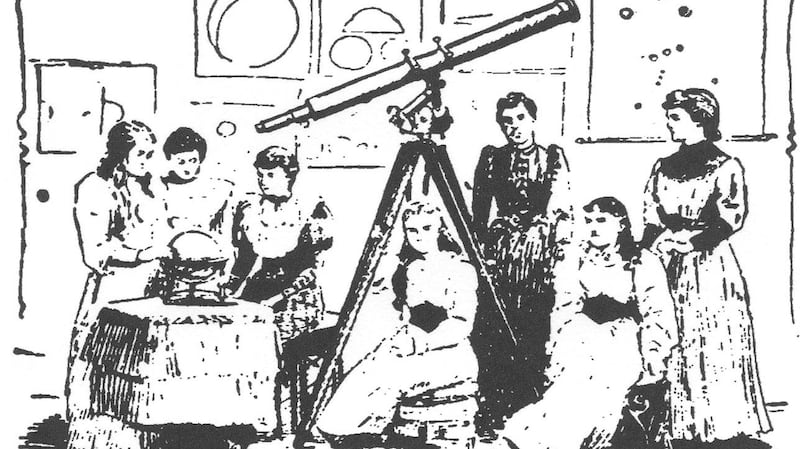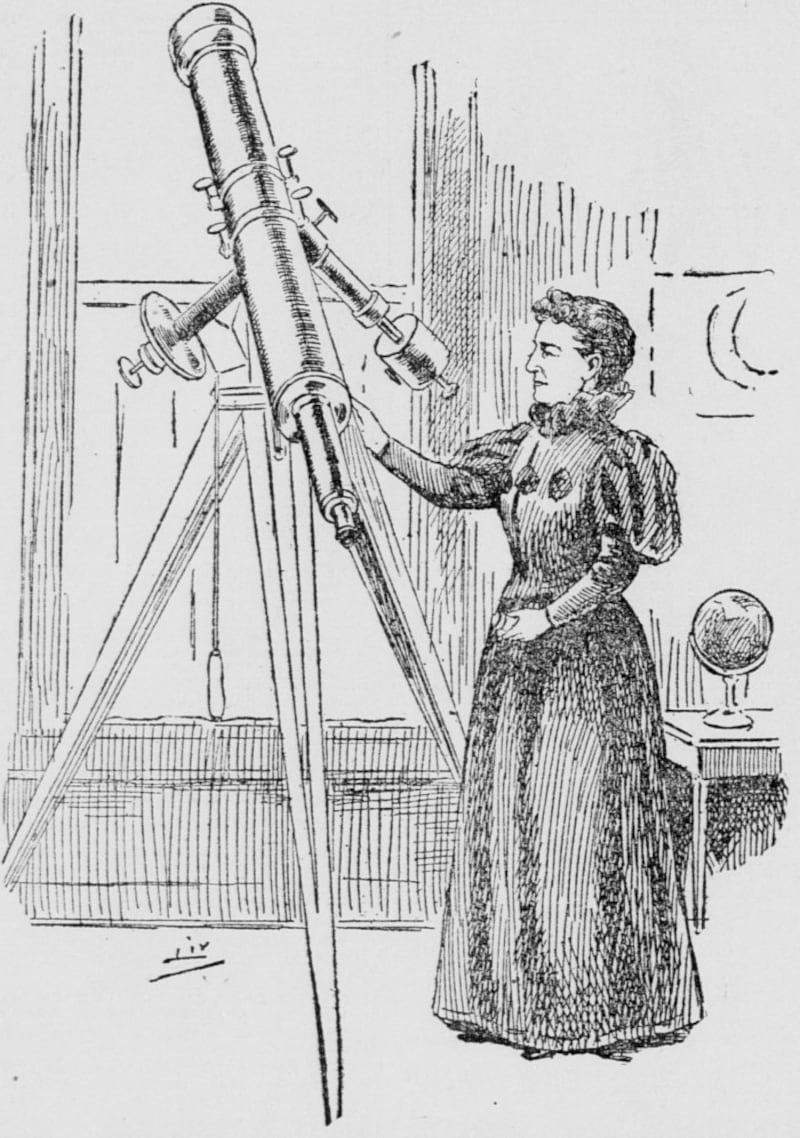In 1895, Marie Evelyn, a journalist from the San Francisco Call was sent to interview an eccentric local figure, one Ms Rose O'Halloran, amateur astronomer, described as "The woman with the pet telescope".
O'Halloran was a prime example of the opportunities emigration could offer women. Born in 1843, records of her early life are scant. Her father, Edmund O'Halloran, is recorded as having been born in Carrick-on-Suir in Co Tipperary and was a landowner. Rose herself told her friend, United Coast and Geodetic Survey's George Davidson, that upon her father's death the estate wasn't large enough to support the family. She came to San Francisco to earn a living becoming a private teacher to young women.
As a young privately educated woman herself, she had been intrigued by astronomy, and as a child read and re-read her one astronomy text book. Her time in San Francisco allowed her to research further and teach herself the mathematical knowledge required to begin to track sun spots and search for variable stars (stars whose brightness changes). Her daily work allowed her to buy the four-inch telescope she used for her research, and she would bring it to the roof of her porch on a nightly basis to continue her work.

William Wallace Campbell of the Lick Observatory credited O'Halloran with being the first to see a giant sunspot emerge on the sun's limb. She began to observe the sun spot's emergence in late 1891, but it wasn't recorded at Greenwich until February 1892. Prof Davidson corroborates this claim in Evelyn's 1895 interview: "Do you remember two years ago, when they were making such a hurrah about having discovered some spots on the sun? Well, the day the news was telegraphed to San Francisco, Ms O'Halloran was at our house and when I told her about it she said in her quiet little way: 'Why, professor, I noticed those spots two months ago'. Yes, and she had not only noticed them, but she had made charts of the spots every day…" As a result of her successes, Edward Singleton Holden, director of the Lick Observatory, made her a member of the Astronomical Society of the Pacific. By 1896, she was a member of the board of directors, and was vice president in 1899.
O'Halloran never had the option to move beyond her amateur work and yet carved out a niche for herself writing popular articles on astronomy for local newspapers and publishing articles in the publications of the Astronomical Society of the Pacific and in Popular Astronomy. She published in the region of 54 articles between 1895 and 1910, and in that year made a trip to Auckland to conduct a year-long sky study. A 10 page guide was published in Popular Astronomy in 1913, but it was to be one of her last articles published there. Her last article in the Publications of the Astronomical Society of the Pacific - a report on Halley's Comet- was seen in 1910. Although she remained a respected amateur and a valued member of the society, the professionalisation of astronomy meant that those without a university background were slowly being edged out. The necessity to make a living meant that O'Halloran had never had the time or means to continue formal education. She was cognisant of this fact and when asked if she coveted a position like that of her contemporary Dorothea Klumpke, she quickly responded: "It requires great influence to get such an appointment, and I am not an expert in such matters. No, I expect to go on teaching".
Evelyn’s 1895 article for the San Francisco Call bears the eye-catching sub-heading “CAN TEACH MEN”, although it’s perhaps the generations of young women she inspired who are her true legacy. Evelyn was keen to play up the mystical aspect of astronomy, as if there was something weird about a woman engaged in the sciences: “Strange cabalistic charts covered the walls, though no doubt they were only maps of the heavens, studded with dusky stars, and photographs of the moon’s mountains and craters. Globes, spheres and astronomical instruments were half outlined in the gloaming, while the telescope, that its owner loves as if it had a heart and soul, gleamed with the last rays of light […]I could not help thinking that in a darker age her devotion to these heavenly bodies would have cost her imprisonment or death at the stake on the accusation of dealing in witchcraft”.

Evelyn also ponders O'Halloran's frail and delicate form - a recurring theme in writings on O'Halloran. But O'Halloran would continue to undermine expectations by living to the ripe old age of 87. Her life was not without challenges, but her intelligence, dedication and passion for science combined with a move to a young city in the United States allowed her to achieve a professional reputation far beyond many of her peers.


















